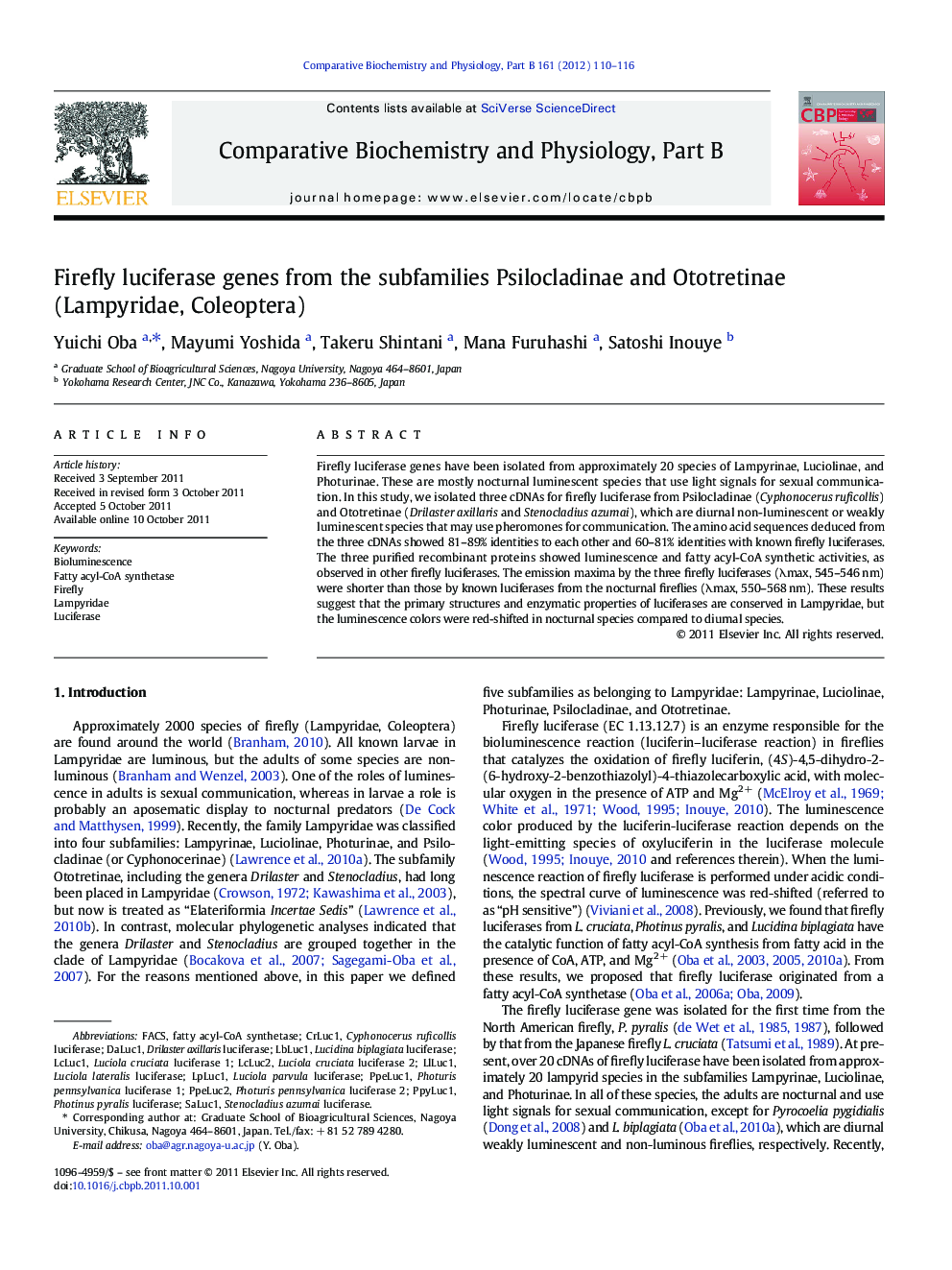| Article ID | Journal | Published Year | Pages | File Type |
|---|---|---|---|---|
| 1975592 | Comparative Biochemistry and Physiology Part B: Biochemistry and Molecular Biology | 2012 | 7 Pages |
Firefly luciferase genes have been isolated from approximately 20 species of Lampyrinae, Luciolinae, and Photurinae. These are mostly nocturnal luminescent species that use light signals for sexual communication. In this study, we isolated three cDNAs for firefly luciferase from Psilocladinae (Cyphonocerus ruficollis) and Ototretinae (Drilaster axillaris and Stenocladius azumai), which are diurnal non-luminescent or weakly luminescent species that may use pheromones for communication. The amino acid sequences deduced from the three cDNAs showed 81–89% identities to each other and 60–81% identities with known firefly luciferases. The three purified recombinant proteins showed luminescence and fatty acyl-CoA synthetic activities, as observed in other firefly luciferases. The emission maxima by the three firefly luciferases (λmax, 545–546 nm) were shorter than those by known luciferases from the nocturnal fireflies (λmax, 550–568 nm). These results suggest that the primary structures and enzymatic properties of luciferases are conserved in Lampyridae, but the luminescence colors were red-shifted in nocturnal species compared to diurnal species.
